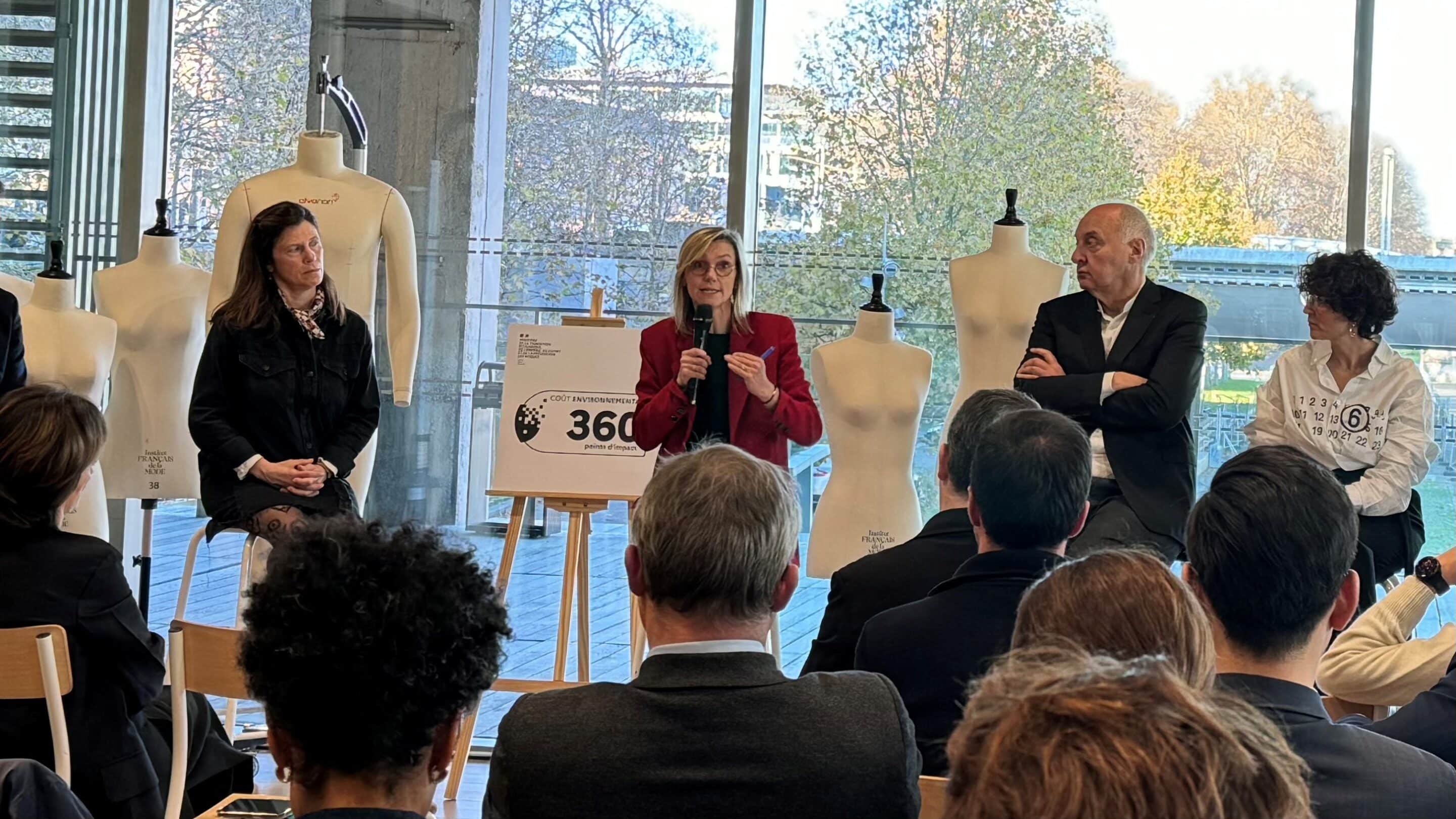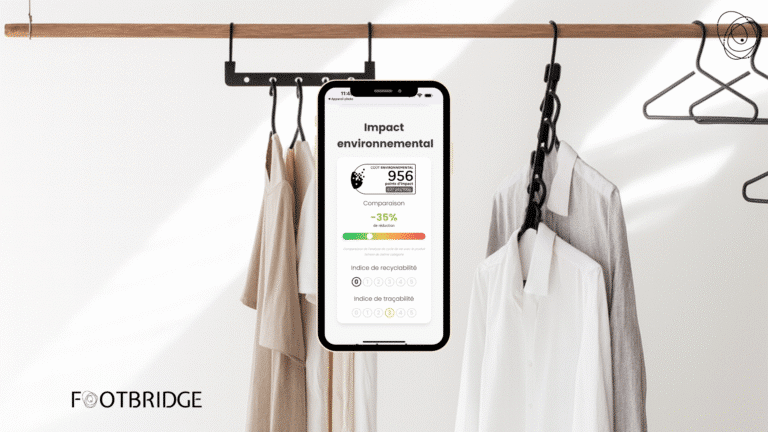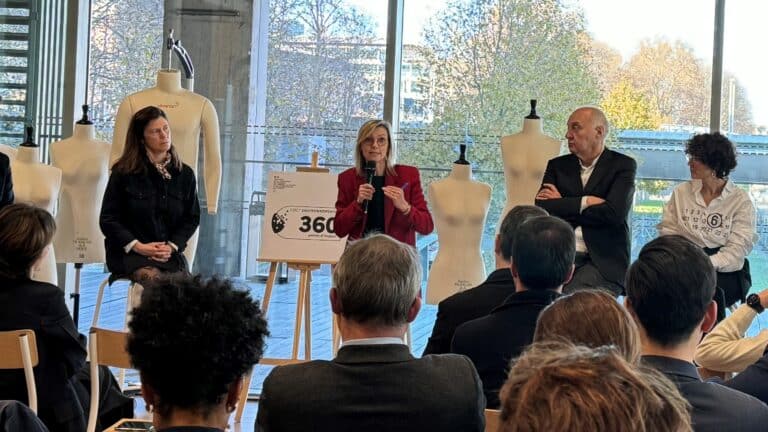Matthieu Guinebault, journalist at FashionNetwork, has recently published two articles concerning the latest news on environmental textile labelling in the EU and France. Read on:
Since May 14, 2025, several official communications have been published concerning the validation of PEFCR (Product Environmental Footprint Category Rules) for clothing and footwear, as well as French environmental display for the textile sector.
Sommaire
PEF Apparel & Footwear validated but banned from display
Here is a summary of the main publications from the European Commission, the PEFCR Technical Secretariat, ADEME and the French Ministry of Ecological Transition:
🇪🇺 European Commission
Validation of the PEFCR for clothing and footwear: On May 14, 2025, the European Commission approved the final version of the PEFCR for textile and footwear products. This harmonized methodological framework aims to assess the environmental footprint of products within the EU. However, its use is restricted to business-to-business (B2B) communications and cannot be used for consumer displays.
European Commission Recommendation 2021/2279: This recommendation establishes the PEF and OEF methods as common approaches for measuring the environmental performance of products and organizations. It aims to harmonize environmental assessments across the EU, facilitating comparability and transparency.
🧵 PEFCR Technical Secretariat
Statement by Baptiste Carrière-Pradal: The director of the technical secretariat welcomed the PEFCR’s approval, stressing that no further changes were required. He said the framework would provide a common, « science-based reference for improving product footprints in the apparel and footwear sector. »
Calculate the eco-score of your clothing
Master the environmental impacts of your designs with our dedicated platform.
Schedule a demoTowards harmonized environmental textile labelling (?)
🇫🇷 ADEME (French Agency for Ecological Transition)
Update on environmental labelling for textiles: In May 2025, ADEME announced that the calculation method for environmental labelling in the textile sector has now been stabilized. A decree is expected shortly, following the positive European notification received in May 2025. The aim is to roll out this display on a voluntary basis by 2025, with a possible legal obligation in the medium term.
🏛️ Ministry of Ecological Transition (France)
Validation of French environmental labelling: On May 15, 2025, the European Commission validated France’s environmental labelling scheme for clothing. This scheme, distinct from the European PEFCR, aims to provide consumers with clear information on the environmental impact of clothing. It is now awaiting final approval by the Conseil d’Etat.
Revision of the EPR TLC specifications: On May 18, 2025, Agnès Pannier-Runacher announced the launch of a revision of the EPR specifications for textiles, household linen and footwear. This revision aims to reinforce eco-design, improve traceability and support the development of collection and recycling.
Two complementary approaches for a common goal
These two initiatives reflect a common desire to enhance environmental transparency in the textile sector. While the PEF method provides a harmonized framework for professionals at European level, the French scheme aims to inform consumers directly. This dual approach underlines the complexity of environmental assessment in the clothing sector, and the need to adapt tools to different target audiences.
Many questions remain…
It’s good news that the European Commission has taken on board the criticisms levelled at the PEFCR and the French initiative (with the contribution of experts including Footbridge since 2022). But in view of the announcements made, we are tempted to ask: why make things simple when you can make them complicated?
Many questions remain:
- Why prohibit the display of the PEF score while making its implementation official (for B2B use)?
- Will the French environmental score become the standard for display in Europe?
- Will the observations made by certain “consultancies” on the French methodological framework and LCA databases be taken into account to achieve a reliable environmental display that encourages sustainable innovation and committed companies?
- What environmental score should be displayed in other European countries?
In France, the methodological framework for calculating “environmental costs” is becoming clearer. But there are still many unknowns, and the “official” database is still woefully inadequate. The devil is often in the detail. A number of impact measurement experts (including the Footbridge team) have joined forces to share their expertise in relation to their clients (mainly French brands) with the Ademe and CGDD teams, in order to arrive as quickly as possible at the most relevant and reliable environmental scores possible, depending on the level of commitment of companies to the eco-design of their products.
Forthcoming meetings with Ademe and the CGDD should help us gain a clearer picture and answers to these questions.
📌 To remember
- European PEF: harmonized B2B tool, not intended for consumer display.
- French display: intended for consumers, awaiting final validation.
- Common objective: to improve environmental transparency in the apparel industry.
Sources
- https://ma.fashionnetwork.com/news/La-commission-europeenne-donne-son-feu-vert-a-l-ecoscore-europeen-pef,1730713.html
- https://affichage-environnemental.ademe.fr/
- https://www.ecologie.gouv.fr/presse/agnes-pannier-runacher-annonce-validation-laffichage-du-cout-environnemental-vetements
- https://www.ecologie.gouv.fr/presse






